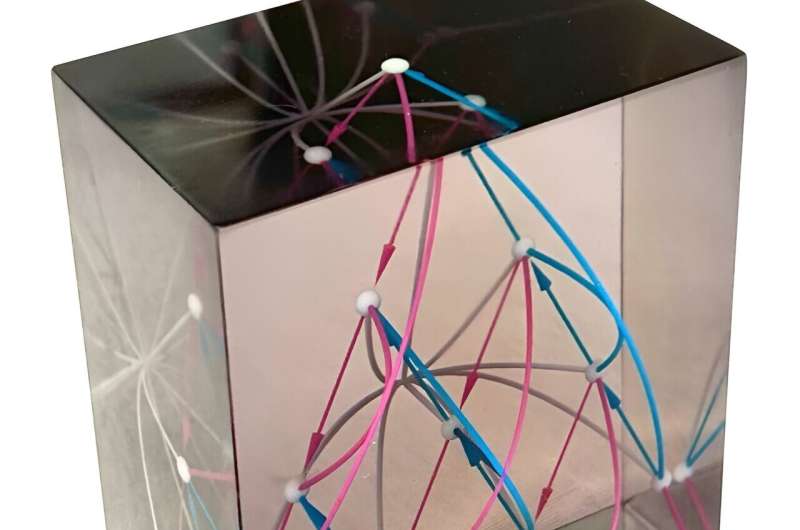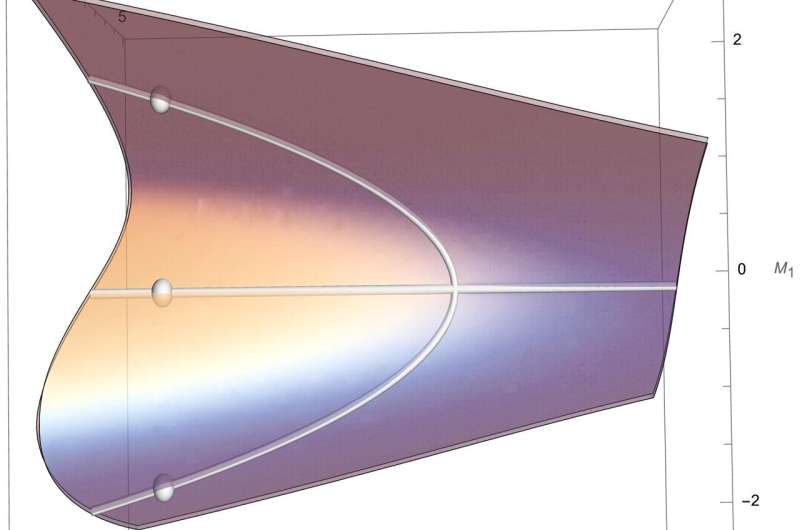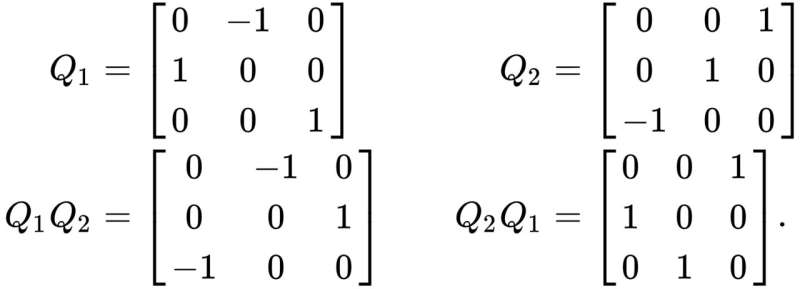
A 3D-printed decuplet crystal, skeleton, and nerves of a large algebra designed by Daniel Bedats. Printed using a Stratasys J750 3D printer at ISTA’s Miba Machine Shop. Credit: Bedats / Anna Hausel
Several fields of mathematics developed in total isolation, using their own “undecipherable” coded languages. In a new study published in Proceedings of the National Academy of SciencesTamás Hausel, professor of mathematics at the Institute of Science and Technology Austria (ISTA), presents “big algebras,” a two-way mathematical ‘dictionary’ between symmetry, algebra, and geometry, which can strengthen the connection with between the distant worlds of quantum physics and number theory.
Mathematics, the most precise of scientific disciplines, can be viewed as the ultimate search for absolute truth. However, mathematical roads to reality often have to overcome enormous obstacles, such as conquering indescribably high mountain peaks or building giant bridges between isolated continents.
The world of mathematics is full of mysteries and many mathematical disciplines have developed on opposite paths—completely isolated from each other. So, establishing an irrefutable truth around complex phenomena in the physical world takes intuition and a great abstraction.
Even basic aspects of physics push mathematics to new heights of complexity. This is especially true for symmetries, with the help of which physicists have theorized and discovered a whole zoo of subatomic particles that make up our universe.
In an exceptionally ambitious effort, Hausel, professor at the Institute of Science and Technology Austria (ISTA), not only conjectured but also proved a new mathematical tool called “big algebras.”
This new theorem can be compared to a “dictionary” that deciphers the most abstract aspects of mathematical symmetry using algebraic geometry. By operating at the intersection of symmetry, abstract algebra, and geometry, large algebra uses more tangible geometric information to recapitulate sophisticated mathematical information about symmetries.
“In large algebras, information from the ‘tip of the mathematical iceberg’ can give us unprecedented insights into the hidden depths of the mysterious world of symmetry groups,” Hausel said.
With this mathematical breakthrough, Hausel sought to bring together the connection between two distant fields of mathematics.
“Imagine, on the one hand, a world of mathematical representations of quantum physics, and on the other hand, very far away, the purely mathematical world of number theory. In the present work, I hope I have come a step closer to establishing a strong connection between these two worlds.”
No more lost in translation
The 17th century philosopher and mathematician René Descartes showed us that we can understand the geometry of things by using algebraic equations. Thus, he was the first to “translate” mathematical information between previously separate fields.
“I like to look at the relationships between different areas of mathematics as dictionaries that translate information between the often incomprehensible languages of mathematics,” Hausel said.
To date, several such mathematical “dictionaries” have been developed, but some only translate information in one direction, leaving information about the way back completely encrypted. Furthermore, the term “algebra” today encompasses both classical algebra, as in Descartes’ time, and abstract algebra, i.e., the study of mathematical structures that cannot necessarily be expressed in numerical values. . This adds another layer of complexity. Today, Hausel uses abstract algebra and algebraic geometry as a two-way “dictionary.”

The trident is the outline of triplet big algebra’s surface, drawn using algebraic geometry techniques. Credit: Bedats/Hausel
An outline and nerves
In mathematics, symmetry is defined as a form of “invariance.” The group of transformations that keep a mathematical object unchanged is called a “symmetry group.” They are classified as “continuous” (eg, the rotation of a circle or sphere) or “discrete” (eg, the reflection of an object). Continuous symmetry groups are represented mathematically by matrices—rectangular arrays of numbers.
Starting with the matrix representation of a continuous symmetry group, Hausel can calculate a large algebra and represent its essential properties geometrically by drawing its “skeleton” and “nerves” on a mathematical surface.
The skeleton and nerves of big algebra yield interesting, 3D-printable shapes that recapitulate sophisticated aspects of the original mathematical information, thus closing the circle of translation.
“I am particularly excited about this work, because it gives us a completely novel approach to studying representations of continuous symmetry groups. In large algebras, mathematical ‘translation’ is not only works in one direction but in both.”

When the order of operations influences the final result, matrices are called “non-commutative.” In this case, the product Q1 x Q2 is different from the product Q2 x Q1. Credit: Wikipedia
Bridging isolated continents in a vast world of mathematics
How can large algebras strengthen the relationship between quantum physics and number theory, two fields of mathematics that seem worlds apart? First, the mathematics behind quantum physics makes extensive use of matrices—rectangular arrays of numbers.
However, these matrices are generally “non-commutative,” meaning that multiplying the first matrix by the second will not produce the same result as multiplying the second by the first. This causes problems in algebra and algebraic geometry because non-commutative algebra is not yet well understood.
Large algebras can now solve this problem: when computed, a large algebra is a commutative “mathematical translation” of a non-commutative matrix algebra. Thus, information initially contained within non-commutative matrices can be decoded and represented geometrically to reveal their hidden properties.
Second, Hausel shows that large algebras not only reveal relations between related symmetry groups, but also when their so-called “Langlands duals” are related. These duals are a central concept in the purely mathematical world of number theory. In the Langlands Program, a very complex, large-scale dictionary that aims to bridge separate mathematical “continents,” Langlands duality is a concept or tool that allows the ‘mapping’ of mathematical information between different other category.
“In my work, large algebras seem to relate different symmetry groups exactly when their Langlands duals are related, a rather surprising outcome with possible applications in number theory,” Hausel said. .
“Ideally, large algebras would allow me to relate Langlands duality to number theory in quantum physics,” Hausel said.
So far, he has shown that large algebras solve problems on both these continents. The fog began to clear, and the continents of quantum physics and number theory glimpsed each other’s mountains and coastlines on the horizon. Soon, instead of connecting the continents only by boat, a bridge of large algebras may allow easier crossing of the mathematical strait that separates them.
More information:
Tamás Hausel, Commutative avatars of representations of semisimple Lie groups, Proceedings of the National Academy of Sciences (2024). DOI: 10.1073/pnas.2319341121
Provided by the Institute of Science and Technology Austria
Quote: Two-way mathematical ‘dictionary’ could connect quantum physics to number theory (2024, September 12) retrieved September 12, 2024 from https://phys.org/news/2024-09-mathematical-dictionary- quantum-physics-theory. html
This document is subject to copyright. Except for any fair dealing for the purpose of private study or research, no part may be reproduced without written permission. The content is provided for informational purposes only.
#twoway #mathematical #dictionary #connect #quantum #physics #number #theory